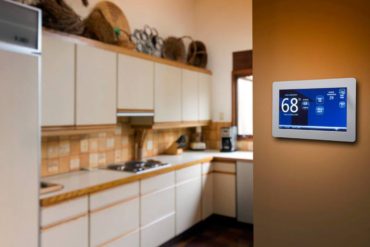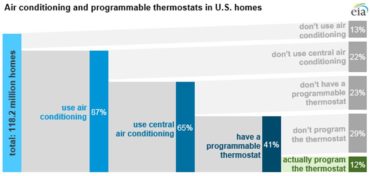 Programmable thermostats are designed to help manage energy use, but most of the U.S. households with these controls do not choose to program their thermostats, according to a bulletin by the Information courtesy Energy Information Administration. Based on information collected through EIA’s Residential Energy Consumption Survey (RECS) for 2015, only 12 percent of the nation’s 118 million households had a central air-conditioning unit that is actually controlled using the programmed thermostat.
Programmable thermostats are designed to help manage energy use, but most of the U.S. households with these controls do not choose to program their thermostats, according to a bulletin by the Information courtesy Energy Information Administration. Based on information collected through EIA’s Residential Energy Consumption Survey (RECS) for 2015, only 12 percent of the nation’s 118 million households had a central air-conditioning unit that is actually controlled using the programmed thermostat.
About one in three households using central air conditioning do not have a programmable thermostat. But even in those households that use central air conditioning and have a programmable thermostat, more than two-thirds of those households control temperatures without actually programming the thermostat.
Programmable thermostats were certified as an ENERGY STAR product beginning in 1995. However, just the presence of a programmable thermostat does not save energy without the appropriate programming. Programmable thermostats were thus removed from the program in 2009, given concerns about realized energy savings. ENERGY STAR still maintains guidelines for the proper use of programmable thermostats.

2015 Residential Energy Consumption Survey
In EIA’s 2015 RECS, respondents were asked how they set indoor temperatures during the summer. Almost half (45 percent) of households using central air-conditioning units said they set the thermostat at one temperature and left it there most of the time. The second most common approach was to manually adjust the temperature at night or when no one was at home (26 percent). Using a programmable thermostat to automatically adjust indoor temperatures was the third most common approach (18 percent), and it was more common than manually turning equipment on or off as needed (11 percent).
Read more in EIA’s bulletin. The conclusion? You actually need to program your thermostat if you’re trying to save on energy consumption.









